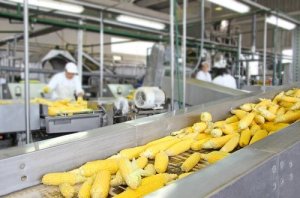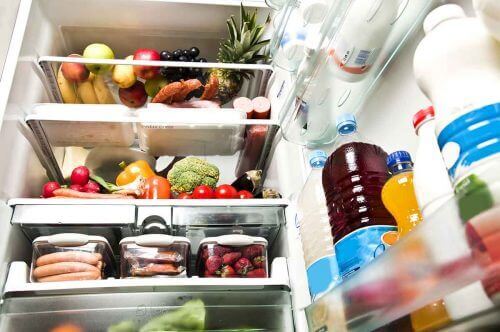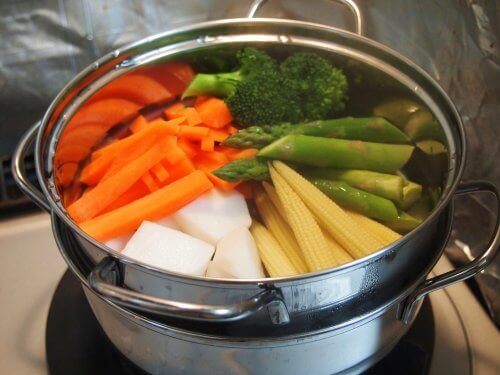The Influence of Food Processing on the Nutritional Value of Foods

Food processing is required to prevent the deterioration of many foods. After all, over time, foods undergo biochemical modifications and become unfit for human consumption. However, food processing modifies the nutritional value of foods.
In this article, we’ll tell you the influence of food processing on the nutritional value of foods.
The influence of food processing on the nutritional value of foods
Certain foods, such as milk, meat, fish, vegetables, and fruits, spoil faster than others. This is because these foods contain more water than others, so they have a shorter shelf life.
The food industry processes foods to:
- Eliminate the risk of disease transmission associated with the presence of microorganisms in raw foods.
- Make them pleasing to the palate and facilitate their intake and digestibility.
- Eliminate certain factors present in raw foods that act as anti-nutritional agents.
- Increase their shelf life.
Food processing methods
Food processing methods eliminate the possible growth of microorganisms. Also, they seek to avoid chemical and biochemical reactions that cause spoilage.
Below, we’ll explain the most common food processing methods used by the food industry and that people in their kitchens use, as well.
Refrigerating and freezing

Freezing and refrigerating are the most common forms of food preservation.
However, you always have to keep your fridge clean. This is the main way to preserve the nutritional value of foods. This is because it prevents enzyme activity and bacterial growth. Then, nutritional losses are minimal or null, since they’re produced exclusively in the packaging, freezing process, or thawing process if the cold chain is broken.
When you want to defrost food, do this in the refrigerator. This is because microorganisms grow faster at room temperature.
Drying
This method consists of partially or totally extracting water from foods. Its effects on the nutritional value of foods are:
- Loss of some vitamins due to the high temperatures.
- Protein denaturation.
- Organoleptic property modification.
Make sure you read: How to Make Your Own Solar Food Dehydrator
Pasteurization
Pasteurization is primarily applied to dairy products and vegetables. Overall, they lose some vitamins in the pasteurization process. No matter what, it’s important to avoid raw dairy products. This is because they may contain pathogenic organisms.
Sterilization
This is the most effective heating method, as it removes pathogenic and vegetative organisms and spores. However, it negatively affects many nutrients, particularly vitamins, that are lost due to the heat, and the biological value of proteins, due to the Maillard reaction.
Blanching
All vegetables except onions have to be blanched with water or steam before freezing them to reduce the microbial burden and inactivate the enzymes that can cause off-flavors during storage. You can blanch foods with 190-210°F water or using 250-265°F steam for two to ten minutes. This process leads to vitamin and mineral loss. Therefore, frozen vegetables have fewer vitamins and minerals than raw ones.
Boiling
This is one of the most common cooking methods, in which food is immersed in water at a temperature of about 210°F. During this process, an important part of the vitamins and minerals pass on to the boiling water. Therefore, it’s advisable to take advantage of said water.
Boiling has good nutritional value benefits because:
- This process increases some foods’ nutrient bioavailability. This is especially true in the case of legumes, potatoes, and eggs.
- It improves the bioavailability of proteins and complex carbohydrates.
- It improves the organoleptic characteristics of food.

Frying
This is a process by which foods are cooked at high-temperature oil in a short amount of time. However, it’s one of the least healthy methods here. Here are the effects of frying on the nutritional value of foods:
- Loss of the nutritional value of proteins.
- It can cause the emergence of toxic compounds due to the oxidation of fats.
- Thermal destruction of vitamins.
- Increased energy value of foods (more calories).
This article may interest you: Three Fermented Foods That Shouldn’t Be Left Out of Your Diet
Microwave heating
Microwaves emit low-energy electromagnetic radiation that can’t ionize. Thus, they don’t generate free radicals and don’t cause compounds that alter organoleptic characteristics or that may be considered toxic to emerge. Therefore, this is a safe method to head foods.
Baking
Baking subjects foods to uniform and constant heat to cook them. This process allows them to obtain different textures. It influences the nutritional value of food as follows:
- Loss of proteins due to the Maillard reaction and loss of vitamins due to heat.
- It increases protein digestibility.
- Loss of nutrients.
- It increases the bioavailability of B vitamins.
Roasting
Although it’s similar to baking, the goal of roasting is to obtain crunchy textures. It leads to protein and vitamin-related nutritional losses, especially thiamine.
Overall, food processing allows us to preserve foods for longer and prevents microbial diseases. If you eat healthy and varied foods, you shouldn’t worry about the nutrient losses these methods cause.
All cited sources were thoroughly reviewed by our team to ensure their quality, reliability, currency, and validity. The bibliography of this article was considered reliable and of academic or scientific accuracy.
- Gilani, G. S., Cockell, K. A., & Sepehr, E. (2005). Effects of antinutritional factors on protein digestibility and amino acid availability in foods. Journal of AOAC International, 88(3), 967-987
- Kotermori A., Ishihara J., Zha L., Liu R., et al., Dietary acrylamide intake and risk of breast cancer: the japan public heath center-based prospective study. Cancer Sci, 2018. 109 (3): 843-853.
- Mikkelsen K., Apostolopoulos V., Subcell Biochem, 2018.
This text is provided for informational purposes only and does not replace consultation with a professional. If in doubt, consult your specialist.









